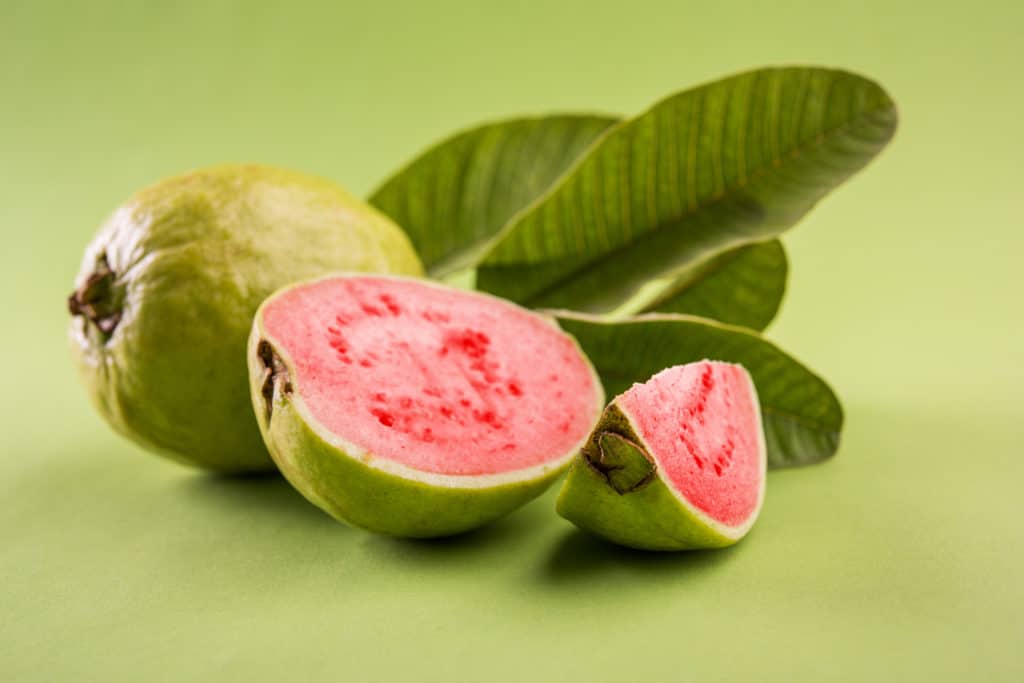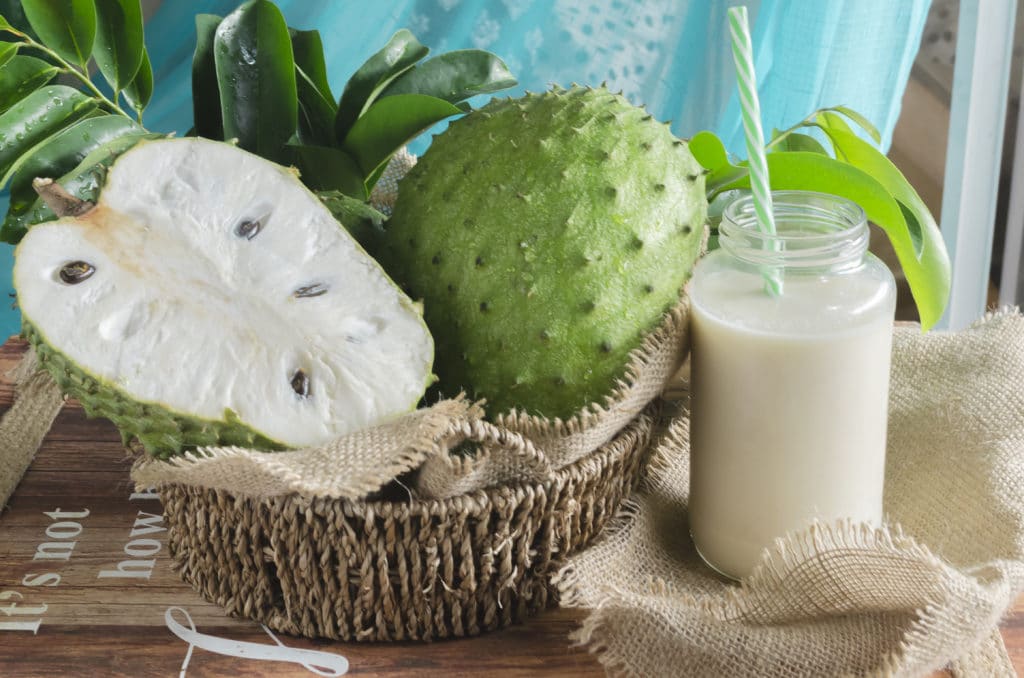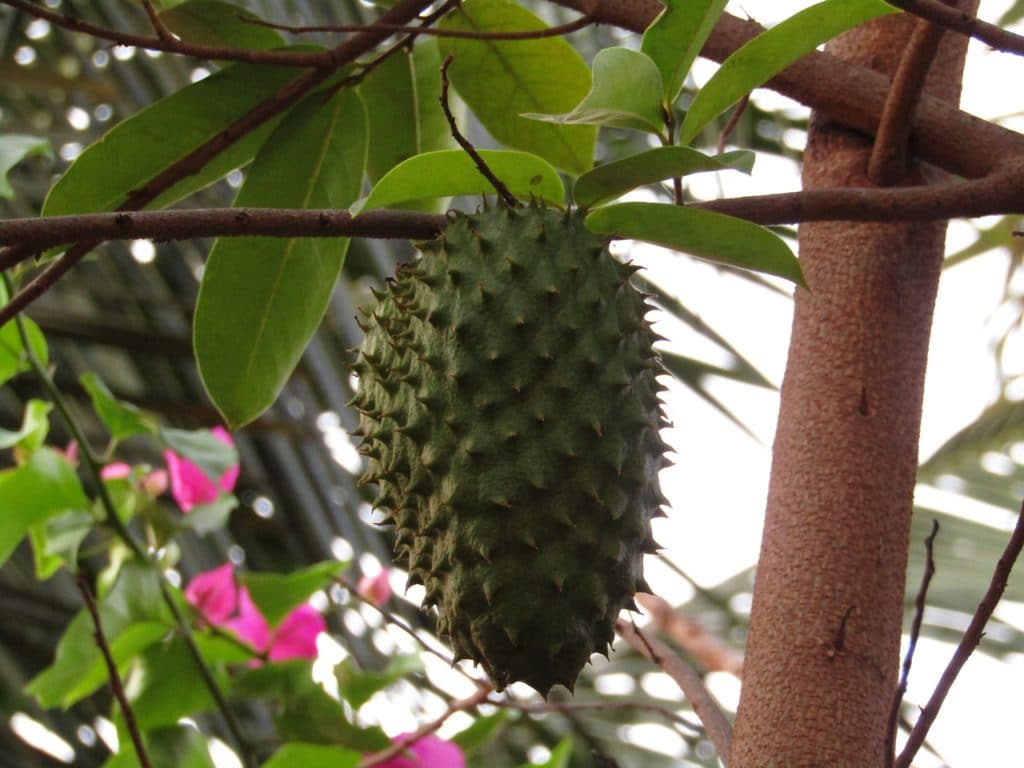This post contains affiliate links that I may earn a small commission on at no additional cost to you. I only recommend products that I have used myself and enjoy.
So, upon arriving in Costa Rica, maybe you’ve heard about guavas, guayabas, Guayabo and even Guanabana! What is this trickery? Why so many similar names?
If you’re thinking, “Guat in the world are you talking about?” listen up.
I’ve got the interesting low down.
Guava
I’m betting you know what a guava is, so we’re good to go. In case you don’t, it’s this little guy in the picture below.

Guavas grow in the tropical regions of Mexico, Central America and of course Southeast Asia. You also may find them in Hawaii and Florida.
Until the last few years, guavas have been hard to find in Upstate New York. While you can find them, they’re still not very common. My local supermarket does not sell guavas, but there are stores a little further out towards Albany that will carry them once in a while.
Luckily, you can find guava juice (though, buyer beware: it’s HIGHLY sweetened). There’s also frozen guava pulp (along with other fruit pulps) that you can use to make juice, smoothies and sauces (think guava syrup over cheesecake)! And of course, my favorite, guava jelly on toast!
Guayaba
In Costa Rica, maybe you also heard about a guayaba. So what kind of fruit is a guayaba? Well, it’s this little guy in the picture above.
Yep. Guayaba is Spanish for guava.
However, in Costa Rica, you’re going to find a lot more, and tastier options for consumption.
Besides finding fresh guayabas all around the marketplace, restaurants commonly serve guayaba juice.
In the supermarket, I never miss buying guayaba jam. I always bring a container back, it’s awesome on toast and I can’t find it anywhere in Upstate New York. You can also look for chocolate-covered guayaba candy.
However, the blue ribbon has to go to pastries made with guayaba. Stores and bakeries will sell little guayaba empanadas or little “pasteles” like mini pie crusts filled with guava jam. It’s such a delicious and unique taste and is scrumptious with coffee.
Guayabo
Okay, so if guayaba is Spanish for guava, then Guayabo must be….a boy guava, right?
Oooo, sorry. Close, but no cigar.
Guayabo isn’t a fruit, but it’s pretty cool nonetheless. Guayabo in Costa Rica refers to Guayabo National Monument and Park located near the city of Turrialba, in the beautiful Cartago province.

How often do you get to combine a pre-Columbian ruin excursion with a jungle AND a volcano? Well, you can if you visit Guayabo National Monument and Park. Situated on the slopes of the Turrialba Volcano, Guayabo is the most important (and protected) archaeological site in Costa Rica. This site was believed to be the home to roughly 10,000 people as early as AD 800 (who, by the way, just disappeared). It’s home to cobblestone streetways (many going far into the thick jungle) as well as carvings, tombs and ruins.
Oh, as a side note, I’ve also learned that guayabo is also slang for “hangover”, but not in Costa Rica. Plus, I know you are all responsible travelers and would never dream of creating a hangover for yourselves. So, onward!
Guanabana
And this finally leaves us with Guanabana. The strangest looking of the fruit we’ve just discussed.

The first time I saw a guanabana, I was perplexed. I’d never seen anything like it, much less imagined there was a name in English for it. There is. It’s called a soursop. The guanabana is obviously much much larger than the guava. To me, it slightly resembles a cherimoya (chirimoya) or annona, but it is neither.
Large, green and pointy, this reptilian looking fruit when cut has white flesh with large, black seeds. It has a somewhat silky texture and a mild, cantaloupe-like flavor. It’s used often in making a drink with milk. The drink itself is delicious, but the slimy texture is unexpected and might be an acquired taste. You’ll also find guanabana ice cream, and Tang even has a guanabana flavor in Costa Rica similar to the Klass guanabana mix. However, I wholeheartedly recommend that you try the natural beverage for the real experience!






I don’t know how accurate it is but according to the website at the below link
guayabo is the original name used for the guava plant and the Spanish started calling it guayaba instead. I was trying to figure out what a guayabo fruit was because I was reading about the southern Tepehuán in Mexico and it mentioned guayabo as one of the fruits they grow. So I think guayabo fruit is the same as guayaba which is the same as guava. Now I’m curious where the term guava comes from.
https://www.ehow.com/info_8554326_difference-between-guayaba-guava.html
Hi Marisa, that’s very interesting. It could very well be quite accurate. Words change through time; I’m not sure why we shortened it to guava either, guayaba is a pretty easy word to say, ha ha. What’s in a name? A rose by any other name would smell as sweet.
Generally speaking the masculine form in Spanish is going to refer to the the plant or the tree and the feminine the fruit:
Manzanzo-apple tree
Almendro-almond tree
Guayabo-guava or guayaba tree/plant
You are correct, Robert, thank you for the tip!